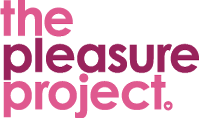Top 20 Pleasure Positive Articles
Allen, Louisa & Carmody, Moira, 2012
“Pleasure Has No Passport”: Re-Visiting the Potential of Pleasure in Sexuality Education. Sex Education: Sexuality, Society and Learning, 12(4), pp.455–468.
Boyce et al., 2007.
Putting sexuality (back) into HIV/AIDS: Issues, theory and practice 1. Global Public Health, 2(1), pp.1–34.
Higgins, J. & Hirsch, J., 2007.
The Pleasure Deficit: Revisiting the “Sexuality Connection” in Reproductive Health. International Family Planning Perspectives, 33(3), pp.133–9.
Hirst, J., 2013.
‘It’s got to be about enjoying yourself’: young people, sexual pleasure, and sex and relationships education, Sex Education, 13(4), pp.423-436.
Horne, Sharon, 2006.
The Female Sexual Subjectivity Inventory: Development and Validation of a Multidimensional Inventory for Late Adolescents and Emerging Adults. Psychology of Women Quarterly, 30(2), pp.125–139.
Arrington-Sanders, R. et al., 2015.
The Role of Sexually Explicit Material in the Sexual Development of Same-Sex-Attracted Black Adolescent Males. Archives of Sexual Behavior, 44(3), pp.597–608.
Fine, M., 1988.
Sexuality, schooling, and adolescent females: The missing discourse of desire. Harvard educational review. 58(1), pp. 29-54.
Higgins, J.A. & Hirsch, J.S., 2008.
Pleasure, power, and inequality: incorporating sexuality into research on contraceptive use. American journal of public health, 98(10), pp.1803–13.
Holland et al., 1990.
Sex, gender and power: young women’s sexuality in the shadow of AIDS. Sociology of Health & Illness, 12(3), pp.336–350.
Hoppe, T., 2011.
Circuits of power, circuits of pleasure: Sexual scripting in gay men’s bottom narratives. Sexualities, 14(2), pp.193–217.
Bagnol, B. & Mariano, E., 2008.
Vaginal practices: eroticism and implications for women’s health and condom use in Mozambique. Culture, Health & Sexuality, 10(6), pp.573–585.
Fine, Michelle, 2006.
Sexuality Education and Desire: Still Missing after All These Years. Harvard Educational Review, 76(3), pp.297–339.
Higgins, J.A., Hoffman, S., Graham, C.A. & Sanders, S.A., 2008.
Relationships between condoms, hormonal methods, and sexual pleasure and satisfaction: an exploratory analysis from the Women’s Well-Being and Sexuality Study. Sex Health, 5(4), pp.321–330.
Holland, J., Ramazanoglu, C., Scott, S., Sharpe, S. & Thomson, R., 1992.
Risk, power and the possibility of pleasure: Young women and safer sex, AIDS Care, 4:3, 273-283.
